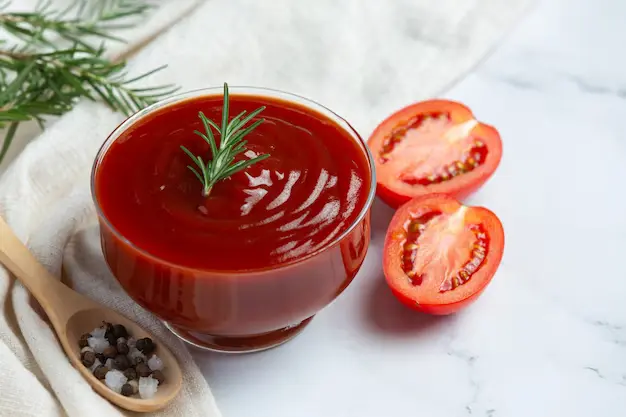tomato paste(sauce) is an inexpensive, versatile flavor powerhouse. With NanoPro, we provide consultancy services for industrial food businesses that produce at different scales. We produce the most suitable solutions for your needs and support you in applying them to your projects. We have knowledge and experience in different fields in the food industry. However, we are aware of the technical and commercial challenges of the projects. We can understand your products and goals and draw the right roadmap together, we produce solutions for your current or anticipated problems, we support and guide you at every step from idea to production. We deploy its concentrated (Tomato paste made) sweetness and savory umami flavor to bring depth and complexity to both classic applications (ketchup- such as sauces, soups, and pastas) and unexpected ones (such as beef stew or spice-rubbed steak).
Other solutions exist: over the past two or three years, several companies in Europe and in the USA have proposed alternative solutions that are effectively innovative, half-way between the traditional tin can and rigid plastic packaging.
In July 2013, UK-based RPC Containers Corby launched a plastic container designed to offer the benefits traditionally associated with metal can packaging.

types packaging of tomato paste
The Klear Can suits products including fruits, vegetables, soups and meats. It has a three-layer plastic construction (PP outer and inner layers, with an EVOH barrier) and is BPA free. The packaging is stackable and offers a shelf life of up to five years, the company claims. The new can has been designed to be used with existing metal can facilities, so manufacturers can use the same filling, seaming, retorting and cooling equipment. Although the body of the can is plastic, it retains a traditional metal ring pull lid and uses the same steel or aluminium ends.

More recently, Sonoco (South Carolina, USA) introduced a clear can as an alternative to the traditional metal version that has been a mainstay packaging option for more than 200 years. Presented last November, the TruVue can (Sonoco’s patented Fusion Freshlock Technology) is made of a multilayer plastic substrate that allows consumers to see the product inside. The clear, retortable plastic can incorporates the metal lid and metal bottom found on a traditional can and runs on existing equipment.

How Tomato Paste Is Made
Companies that sell tomato paste and “ingredient” companies that buy tomato paste to make their own products (such as Heinz ketchup or Stouffer’s lasagna) work with commercial tomato processors to develop pastes to their own specifications. Viscosity (how thick the paste is) and brix (how sweet it is) are defining characteristics.
Once harvested, the tomatoes are transported to a processing facility, washed, and sorted. The electronic sorter uses a high-speed camera that takes photos of everything coming across a conveyor belt and decides whether it should be there. If it’s, say, a leaf or a stem, a machine activates a lever down the line to discard the item.
After sorting, the tomatoes are ground into a pulpy mash and cooked. Here, the American and Italian processing methods for making tomato paste diverge. The processing temperature affects the final taste, color, and texture of tomato paste. A higher temperature darkens and caramelizes paste and deactivates enzymes that would normally break down the fruit’s firming pectin, so the paste stays thicker. The cold-break method, with its lower temperature, yields paste that is looser, brighter red, and fresher-tasting.

Next, the paste is spun at high speed to separate out the pulp and seeds. Then, the remaining tomato juice is pumped into evaporation tanks, which drive off the water. Most of the Italian pastes have salt added, and most of the American pastes contain citric acid to ensure that the paste’s pH is low enough so it can be safely canned for long periods of time. Finally, the paste is packaged for sale.
Your favorite tomato paste:

The paste you choose to buy comes down to two factors: convenience and cost. In the end, you can make any of these tomato pastes work well in any recipe.


